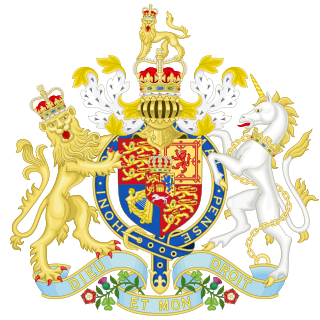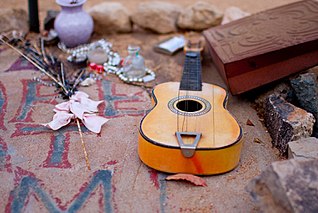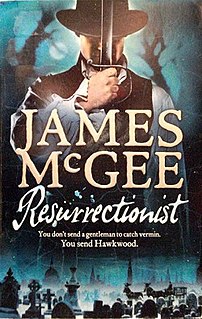 W
WBody snatching is the secret removal of corpses from burial sites. A common purpose of body snatching, especially in the 19th century, was to sell the corpses for dissection or anatomy lectures in medical schools. Those who practised body snatching were often called "resurrectionists" or "resurrection-men". A related act is grave robbery, uncovering a tomb or crypt to steal artifacts or personal effects that had been buried with the deceased; however, grave robbery differs from body snatching in that grave robbing does not involve stealing the corpse itself.
 W
WThe doctors' riot was an incident that occurred in April 1788 in New York City, where the illegal procurement of corpses from the graves of the recently deceased caused a mass expression of discontent from poorer New Yorkers that was directed primarily at physicians and medical students.
 W
WAn Acquaintance with Darkness is a historical fiction novel by Ann Rinaldi. It is part of the Great Episodes series. It is told in first-person narration.
 W
WThe Anatomy Act 1832 is an Act of Parliament of the United Kingdom that gave free licence to doctors, teachers of anatomy and bona fide medical students to dissect donated bodies. It was enacted in response to public revulsion at the illegal trade in corpses.
 W
WPedro Eugenio Aramburu Silveti was an Argentine Army general. He was a major figure behind the Revolución Libertadora, the military coup against Juan Perón in 1955. He became President of Argentina, serving from November 13, 1955 to May 1, 1958. He was kidnapped by the radical organization Montoneros on May 29, 1970 and murdered, allegedly in retaliation for the June 1956 execution of General Juan José Valle, an army officer associated with the Peronist movement, and 26 Peronist militants after a botched attempt to overthrow his regime.
 W
WPedro Martínez de Luna y Pérez de Gotor, known as el Papa Luna in Spanish and Pope Luna in English, was an Aragonese nobleman, who as Benedict XIII, is considered an antipope by the Catholic Church.
 W
WThe Body Snatcher is a 1945 American horror film directed by Robert Wise and starring Boris Karloff, Bela Lugosi, Henry Daniell, and Edith Atwater. It is based on the short story "The Body Snatcher" by Robert Louis Stevenson. The film's producer Val Lewton helped adapt the story for the screen, writing under the pen name of "Carlos Keith". The film was marketed with the tagline "The screen's last word in shock sensation!" The frequent mentions of Burke, Hare, and Dr. Knox, all refer to the West Port murders in 1828.
 W
WAlistair Cooke was a British-born American writer whose work as a journalist, television personality and radio broadcaster was done primarily in the United States. Outside his journalistic output, which included Letter from America and America: A Personal History of the United States, he was well known in the United States as the host of PBS Masterpiece Theatre from 1971 to 1992. After holding the job for 22 years, and having worked in television for 42 years, Cooke retired in 1992, although he continued to present Letter from America until shortly before his death. He was the father of author and folk singer John Byrne Cooke.
 W
WJeremiah "Jerry" Cruncher is a fictional character in Charles Dickens' 1859 novel A Tale of Two Cities.
 W
WThe brain of Albert Einstein has been a subject of much research and speculation. Albert Einstein's brain was removed within seven and a half hours of his death. His brain has attracted attention because of his reputation as one of the foremost geniuses of the 20th century, and apparent regularities or irregularities in the brain have been used to support various ideas about correlations in neuroanatomy with general or mathematical intelligence. Scientific studies have suggested that, within Einstein's brain, regions involved in speech and language are smaller, while regions involved with numerical and spatial processing are larger. Other studies have suggested an increased number of glial cells in Einstein's brain.
 W
WGeronimo was a prominent leader and medicine man from the Bedonkohe band of the Apache tribe. From 1850 to 1886, Geronimo joined with members of three other Chiricahua Apache bands—the Tchihende, the Tsokanende and the Nednhi—to carry out numerous raids, as well as fight against Mexican and U.S. military campaigns in the northern Mexico states of Chihuahua and Sonora and in the southwestern American territories of New Mexico and Arizona. Geronimo's raids and related combat actions were a part of the prolonged period of the Apache–United States conflict, which started with American settlement in Apache lands following the end of the war with Mexico in 1848.
 W
WThe stolen body hypothesis posits that the body of Jesus Christ was stolen from his burial place. His tomb was found empty not because he was resurrected, but because the body had been hidden somewhere else by the apostles or unknown persons. Both the stolen body hypothesis and the debate over it presume the basic historicity of the gospel accounts of the tomb discovery. The stolen body hypothesis finds the idea that the body was not in the tomb plausible – such a claim could be checked if early Christians made it – but considers it more likely that early Christians had been misled into believing the resurrection by the theft of Jesus's body.
 W
WThe Marion Cemetery Receiving Vault is a funerary structure in the main cemetery of Marion, Ohio, United States. Constructed in the 1870s, this receiving vault originally fulfilled the normal purposes of such structures, but it gained prominence as the semipermanent resting place of Marion's most prominent citizen, U.S. President Warren G. Harding.
 W
WMark the Evangelist is the traditionally ascribed author of the Gospel of Mark. Mark is said to have founded the Church of Alexandria, one of the most important episcopal sees of early Christianity. His feast day is celebrated on April 25, and his symbol is the winged lion.
 W
WA Morthouse, or Deadhouse, was a specialised secure building usually located in a churchyard where bodies were temporarily interred before a formal funeral took place. These buildings date back to the time when bodysnatchers or resurrectionists frequently illegally exhumed dead bodies that were then sold for dissection as part of human anatomy training at universities, etc. Morthouses were alternatives to mortsafes, watch houses, watch towers, etc.
 W
WA mortsafe was a contraption designed to protect graves from disturbance. Resurrectionists had supplied the schools of anatomy in Scotland since the early 18th century. This was due to the necessity for medical students to learn anatomy by attending dissections of human subjects, which was frustrated by the very limited allowance of dead bodies – for example the corpses of executed criminals – granted by the government, which controlled the supply.
 W
WGram Parsons died on September 18, 1973, in room eight of the Joshua Tree Inn, near Joshua Tree National Park. Encouraged by his road manager Phil Kaufman, Parsons again visited the park after completing his latest recording sessions. Earlier, he had confessed to Kaufman his wish to be cremated and his ashes scattered in the park in case he died.
 W
WThe hands of Juan Perón, former President of Argentina, were dismembered and removed from his tomb in 1987 by unknown burglars.
 W
WRepentance is a 1987 Soviet art film directed by Tengiz Abuladze. The film was produced in 1984, however, it was banned from release in the Soviet Union for its semi-allegorical critique of Stalinism. It premiered at the 1987 Cannes Film Festival, winning the FIPRESCI Prize, Grand Prize of the Jury, and the Prize of the Ecumenical Jury. The film was selected as the Soviet entry for the Best Foreign Language Film at the 60th Academy Awards, but was not accepted as a nominee.
 W
WResurrectionist is a historical mystery novel by author James McGee. It is the sequel to McGee's best-selling Ratcatcher.
 W
WResurrectionists were body snatchers who were commonly employed by anatomists in the United Kingdom during the 18th and 19th centuries to exhume the bodies of the recently dead. Between 1506 and 1752 only a very few cadavers were available each year for anatomical research. The supply was increased when, in an attempt to intensify the deterrent effect of the death penalty, Parliament passed the Murder Act 1752. By allowing judges to substitute the public display of executed criminals with dissection, the new law significantly increased the number of bodies anatomists could legally access. This proved insufficient to meet the needs of the hospitals and teaching centres that opened during the 18th century. Corpses and their component parts became a commodity, but although the practice of disinterment was hated by the general public, bodies were not legally anyone's property. The resurrectionists therefore operated in a legal grey area.
 W
WSilent Storm is a 2003 Australian documentary film written and directed by Peter Butt.
 W
WYoung Frankenstein is a 1974 American comedy horror film directed by Mel Brooks and starring Gene Wilder as the title character, a descendant of the infamous Dr. Victor Frankenstein, and Peter Boyle as the monster. The supporting cast includes Teri Garr, Cloris Leachman, Marty Feldman, Madeline Kahn, Kenneth Mars, Richard Haydn, and Gene Hackman. The screenplay was written by Wilder and Brooks.